UCS, UFB, CCB candidates discuss platforms
BY INDIGO MUDBHARY SENIOR STAFF WRITERThe student Government Association hosted an open platform event for spring elections this Tuesday. Candidates running for positions in the three branches of sGA — the Undergraduate Council of students, the Undergraduate Finance Board and the Class Coordinating Board — spoke about their platforms to students at the event.
Candidates for UCs President, UFB Chair and CCB senior Co-Presidents were required to speak at the event, The Herald previously reported. All other candidates could opt-in to speak at the event, according to Joon Nam ’23, sGA elections chair. Attendees heard from candidates running for CCB 2026 President and Treasurer and a UFB at-large representative candidate.
The open platform event, which took place in Friedman Hall, con-

Several candidates mentioned priorities such as improving student life and the University’s relationship with the Providence community.
sisted of two-minute speeches from candidates, Nam said. He described the event as an opportunity for candidates to share “their goals, ideas and visions” and encouraged attendees to approach candidates with questions after the event.
several candidates mentioned priorities such as improving student life and the University’s relationship with the Providence community.
Professor James Morone reflects on 40 years at U.
smoke and starts to laugh,” Morone recalled. “And he goes, ‘oh my god, we’re gonna hire the wrong f*cking guy.’ ”
 BY ANISHA KUMAR SENIOR STAFF WRITER
BY ANISHA KUMAR SENIOR STAFF WRITER

One weekday in 1982, James Morone ventured into the basement of Maxcy Hall, struggling to see the chair of the University’s urban studies department through a heavy cloud of cigarette smoke. Morone had come to convince the chair to hire him for a position at the University teaching political science and urban studies, despite never having earned a graduate degree in the latter discipline.
He had also come to resolve a misunderstanding about a recommendation letter he’d submitted, confessing to the department chair that the letter was from Brian Barry, a professor of philosophy and political science at the University of Chicago — not Brian Berry, a famed professor of urban geography, also at the University of Chicago.
“He looks at me through the
Today, Morone is a professor of political science and urban studies at Brown. He previously served as the chair of the University’s political science department, director of the public policy program and chair of the faculty executive committee. Morone said this could be his last semester of teaching at the University, as he told The Herald that he plans to retire in the “near future.”
According to Morone, the department chair agreed to hire him over forty years ago on the condition that he promised to bring the enrollment of a class called “Introduction to Urban Politics” from 25 students to 100. Morone has taught the course, now known as POLs 0220: “City Politics,” since 1982.
By Morone’s third year teaching the course, he was lecturing to a crowd of about 150 students. The next year, the course’s enrollment hit 350, he said. Eventually, Morone wound up capping the course’s registration to
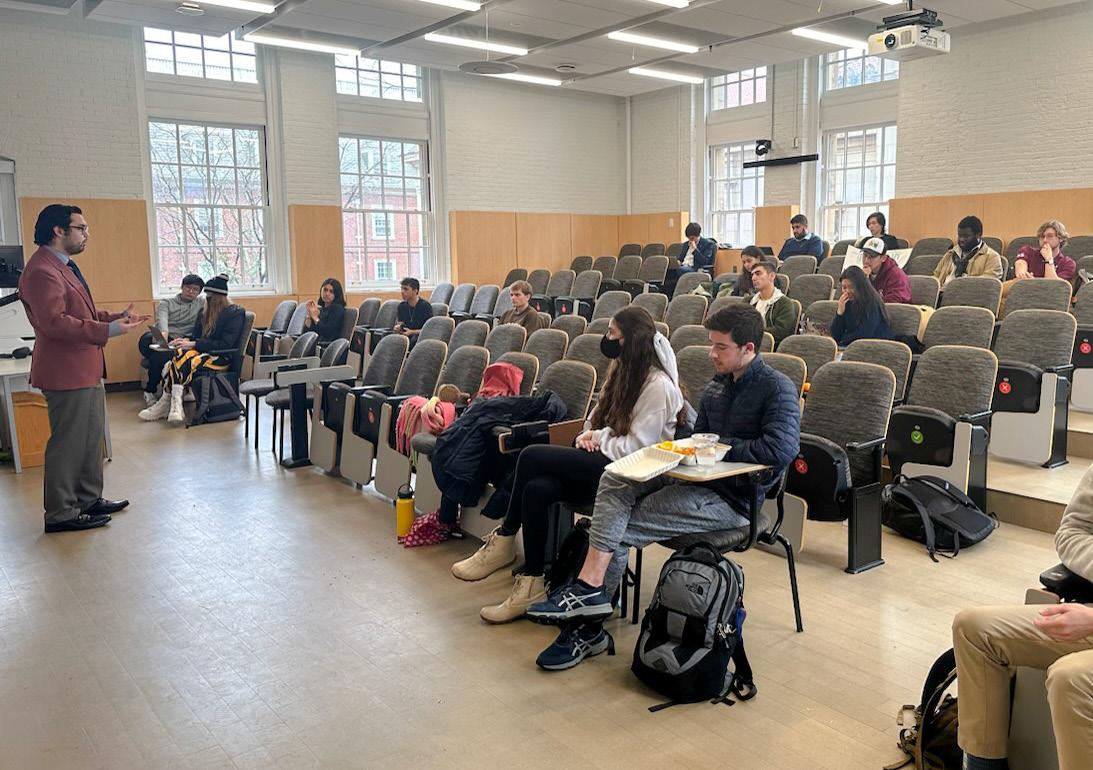
UCS candidates talk relationship with Providence, campus life
Axel Brito ’26, Daniel Greenberg ’25 and current UCs Vice President Mina sarmas ’24 are competing for UCs presidency. Current UCs secretary sarah Frank ’25 and Appointments Director Justin Li ’24.5 are running for the vice presidency, The Herald previously re-
UNIVERSITY NEWS
How three women built their downtown businesses
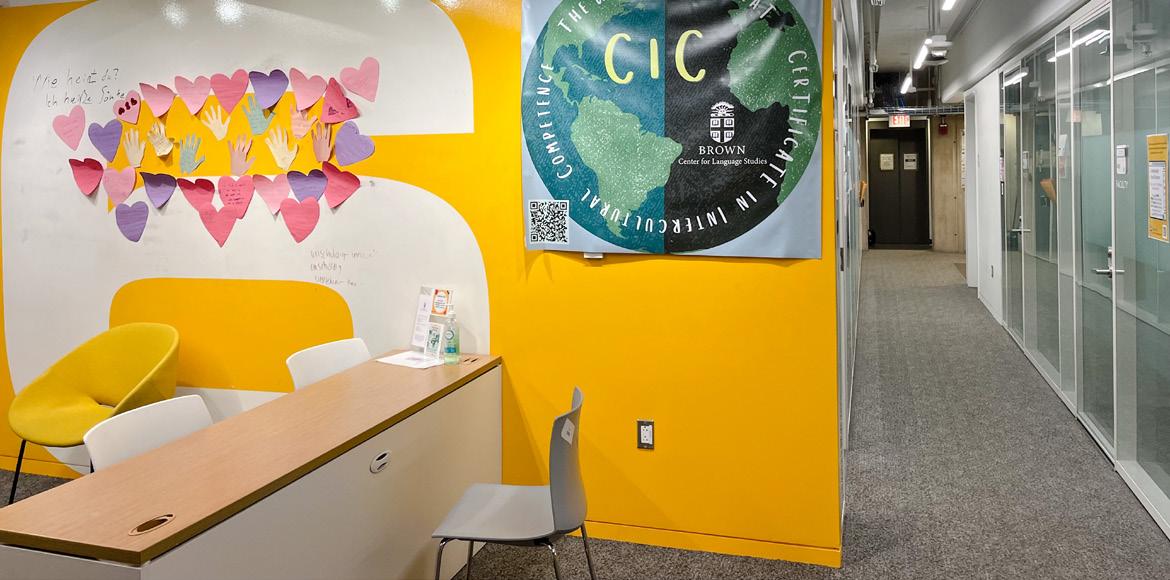
METRO Business owners discuss hardships, successes in entrepreneurship
LILIANA GREYF SENIOR STAFF WRITERWhen Julia Broome, owner of Kin southern Table + Bar, was shopping at Home Depot last weekend, she started speaking with a group of young men in one of the aisles. she asked if they were single — and then began recruiting them to come to a singles’ mixer at her restaurant.
To run a business, “you have to be willing to put yourself out there,” Broome told The Herald. “You can’t be afraid to put yourself out there, and speak, live, eat (and) breathe your brand.”
The Herald spoke with three women who own and run businesses downtown about the successes and challenges of entrepreneurship.
‘I have always had some entrepreneurial spirit’: Kin Southern Table + Bar
Broome opened Kin in March 2021 after she was laid off from her previous job at the start of the pandemic. As a way to stay busy, she wrote down ideas for her ideal career, “but it turned into a business plan,” she said. “Things kind of snowballed from there.”
Kin is a southern comfort-food restaurant and bar located at the corner of Washington and Union streets in the ground floor of the Biltmore Garage downtown. Its menu includes “dranks” such as “Black Girl Magic” and “Cut The Check,” along with lunch foods such as Beer Battered Onion Rings and Chicken n’ Waffles. Kin also hosts singles mixer events, a Kentucky Derby party and an annual Juneteenth block party. “We’re just diving into creating events for the community that bring people together,” she said.
Part of Broome’s inspiration to
Scholar in Residence talks misconceptions of Indigenous anticolonial resistance
BY INDIGO MUDBHARY SENIOR STAFF WRITERIndigenous scholar in Residence Eduardo de la Cruz (Nahua) gave a presentation about Nahua adolescents and their awareness of historical Indigenous resistance to spanish colonialism in the sciences Library Tuesday. The event, titled “Perspectivas y reflexiones de jóvenes nahuas ante la conquista de México,” was organized by the Center for Language studies, the Department of Hispanic studies and the Native American and Indigenous studies Initiative.
De la Cruz is director of Instituto de Docencia e Investigación Etnológica de Zacatecas, a research institute based in Mexico “led by native Nahuatl speakers that works on language revitalization,” according to a Nov. 2020 NAIsI bulletin.
The Nahua People are an indigenous group native to Mexico, El salvador and other parts of Latin America.
De la Cruz has taught Nahuatl at Yale, stanford University and the University of Chicago, and is currently a visiting lecturer for Nahuatl at Brown.
During his talk, which was conducted in spanish with English slides projected for attendees, De la Cruz presented his findings from a series of interviews he conducted with 12- to 16-year-old adolescents in El Tecomate and Veracruz, two municipalities in Mexico. According to de la Cruz, the Mexican education system portrays Indigenous groups as defenseless against spanish colonization, instituting a victim mentality among Indigenous youth.
In his interviews with the Nahua
youth of El Tecomate, de la Cruz found that many school children believed there was no Indigenous resistance during La Conquista, the collapse of the Mexica Empire — also known as the Aztec Empire — due to spanish colonization. “The natives did nothing out of fear,” said one 13-year-old who de la Cruz interviewed.
To help remedy this knowledge gap, de la Cruz is working on translating the Florentine Codex — a 16th-century ethnographic study originally written in classical Nahuatl describing Mexica culture, politics and history — to mod-
UNIVERSITY NEWS
students, colleagues discuss Morone’s influence, teaching, legacy at Brown
scholar’s work focuses on increasing Nahua youth awareness of Indigenous resistance
Candidates speak on importance of community, transparency, diversityASHER SWIDLER / HERALD INDIGO MUDBHARY / HERALD
open Kin during the pandemic was the Black Lives Matter protests that swept the nation during the summer of 2020. “I felt like it was more important than ever to be able to have a place like Kin where people could come together and appreciate each other and celebrate Black culture,” she said.

Because Kin opened mid-pandemic, Broome said she cannot compare her current success with any pre-pandemic routine. “I’ve always just moved and operated in this COVID world that we live in,” she said. “It definitely feels like people are becoming more courageous to come outside and to dine, and so we’re definitely seeing more foot traffic, which is great.”
Broome also wanted to center her culture and family in her business plans. “I felt like we needed to have a space in downtown Providence that offered food that I grew up on — southern comfort — and to have a space for people regardless of their background.”
Though Broome was born and raised in Providence, her mother’s childhood in Virginia shaped much of her culinary perspective. “A lot of the influences (my mother) got growing up, she put on me, and that’s where I get my little southern twang,” she said.
Watching her mother manage a salon and day spa at the Garden City Center in Cranston taught Broome that “when it comes to entrepreneurship, you really have to wholeheartedly believe in whatever your product or your services are … I have always had some entrepreneurial spirit,” she said.
Day to day, Broome pays bills, works on marketing and plans the restaurant’s events. Her parents stop by the restaurant often to sit at the bar and crack jokes with customers. “They’re extremely proud of me,” she said.
Approaching ‘business with happiness and love’: Sin Desserts
While Jennifer Luxmoore, owner of sin Desserts, was working as a continuity director and copywriter for Citadel Broadcasting in the early 2000s, a reporter working on a story about the Powerball asked her what she would do if she won the lottery. “I would open a bakery,” Luxmoore replied.
“And that just got me thinking,” she said. “If money wasn’t an issue, what would I really want to do?”
By then, Luxmoore had been working in broadcasting for a decade, and she was at the top of her department. she found a continuing education program at Johnson and Wales University that met on weekends and enrolled.
“Long story short, I ended up doing desserts for a small restaurant, and I really liked the cake part,” she said. “so, after a couple years, I found my own space.”
Luxmoore opened sin Desserts — which, at the time, exclusively involved making custom cakes — in 2007. “When I first started, it was just me for the first year, and I did everything,” she said. While Luxmoore originally thought she would just be baking, she soon learned to manage emails, deliveries, cleaning, repairs, shopping and other day-to-day tasks involved in running a business.
When looking to expand, Luxmoore faced opposition from her local bank, which she now attributes to discrimination based on her gender. “I wanted to get a loan to purchase this place and to expand, and my bank wouldn’t give it to me,” she said. “Money-wise, it was difficult, and without my husband, I don’t know that I would have been able to do it.”
With time, Luxmoore hired employees and kept expanding. In 2014, the small space next door to their shop became available and Sin added an office for bakers to meet with clients.
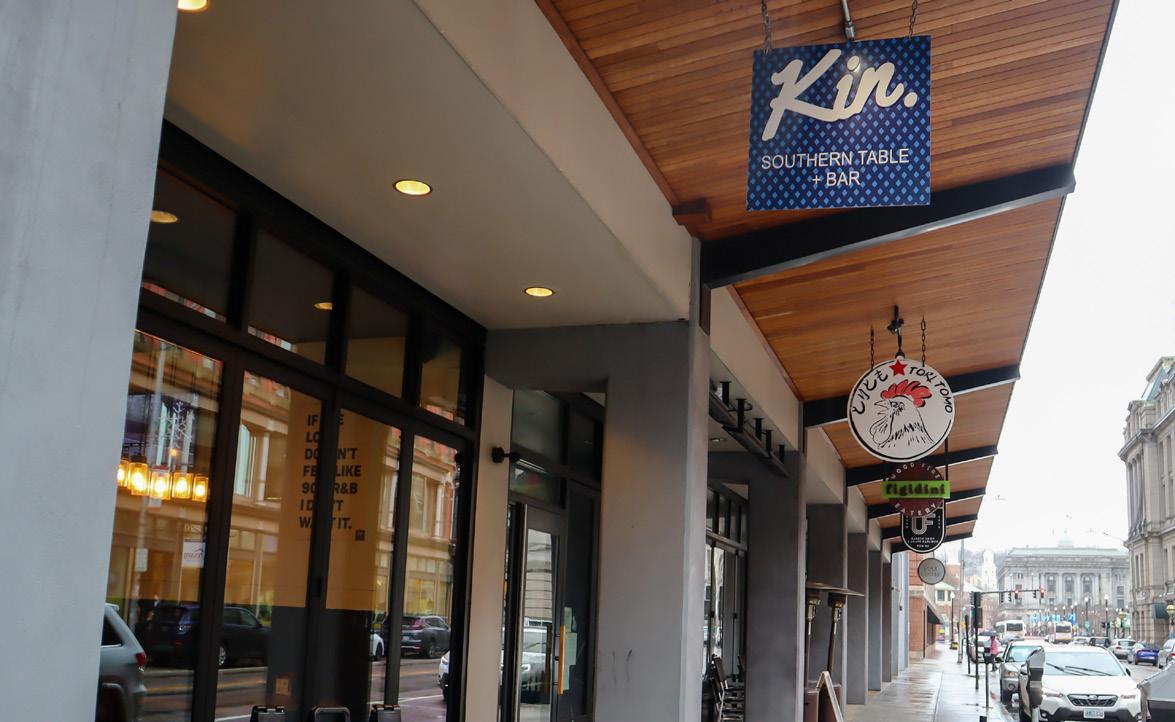
After a few years, the building sin was originally located in was being sold, and the bakery had to move out or shut down, Luxmoore said. Her team planned to move, and in 2017, they opened a new version of the bakery on Westminster street, which included a full retail space with a dessert bar, custom cake shop and a coffee shop serving breakfast foods, pastries and drinks.
During the pandemic, s in only closed for two days. Because Luxmoore received custom orders in March 2020 that customers did not cancel, sin “got some online ordering set up immediately … (and) started doing local deliveries,” she said.
“Because we were one of the few places that were open, we started getting all these little orders — ‘oh, you
know, it’s my granddaughter’s birthday and we can’t visit her, can you send some cupcakes over?’” she added.
Now, according to Luxmoore, sin’s retail looks somewhat different — most of the food is takeout and cocktails have become too cost-prohibitive to serve. But custom cakes are still the primary focus of the business.
“It’s incredibly rare that I bake anymore, which is sad because I love doing that,” Luxmoore said. “I get to do some cake decorating here or there when they need help and a lot of client meetings.” Though Luxmoore is no longer the sole employee of sin, she still changes lightbulbs or goes out to buy fondant.
“I’ve always tried to approach my business with happiness and love with easygoing things — like, it’s cake,” she said. “It should be fun.”
‘From a website to having retail partners nationwide’: Soulita
“I started soulita with no business education, no network, no capital and recovering from a ruptured brain aneurysm,” said Lexus Fernandez, owner of the skincare brand. “And I still made it happen.”
Fernandez was 20 years old and a sophomore in college when she was hospitalized due to an unexpected ruptured brain aneurysm. she instantly struggled to speak well, read, write, go to school or work. “I lost mostly everything in life that I gained over those 20 years, so it definitely hit my mental, emotional, physical and spiritual care,” she said. “But what got me out of it was focusing on my own self-care.”
While in the hospital, Fernandez noticed that her skin became increasingly sensitive. she began making skincare products for herself, learning aromatherapy and herbalism as she worked. Because she was not able to have a traditional job or go back to school, she began selling what she made on Instagram.
When she was discharged from the hospital, Fernandez decided to turn her small brand into a business. she met Evan Delpeche, who became a co-founder of soulita. “It went from a website to having retail partners nationwide,” Fernandez said. Now, soulita also has a storefront on Westminster street.
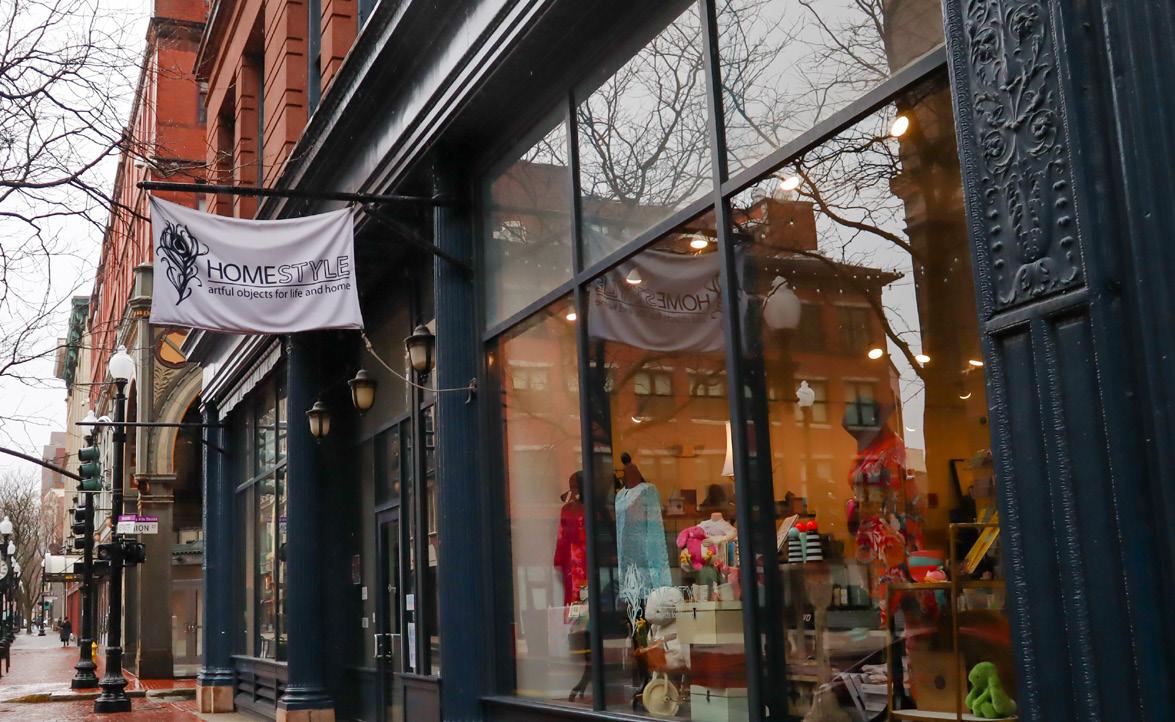

Delpeche and Fernandez are “still wearing all the hats” in the business, Fernandez said. “We’re doing the shipment, manufacturing, the marketing — it’s still all on us. so everything we do is in-house,” she said. “And now we are trying to drop new products every season.”
The name soulita comes from an idea of holistic healing: “I would say certainly the products act as a meditation, and we try to emphasize the
connection between the mind, body and soul,” Fernandez said. “It’s inspired by my own story with overcoming the aneurysm.”
Fernandez encourages anyone with an idea to start their own business. “so many people, they focus on perfection, making sure everything is right, but that’s just rooted in fear,” she said. “You don’t need all the tools to make a masterpiece. so basically, start before you’re ready.”
limit enrollment to 500 students. This semester, 226 students are enrolled in the course.
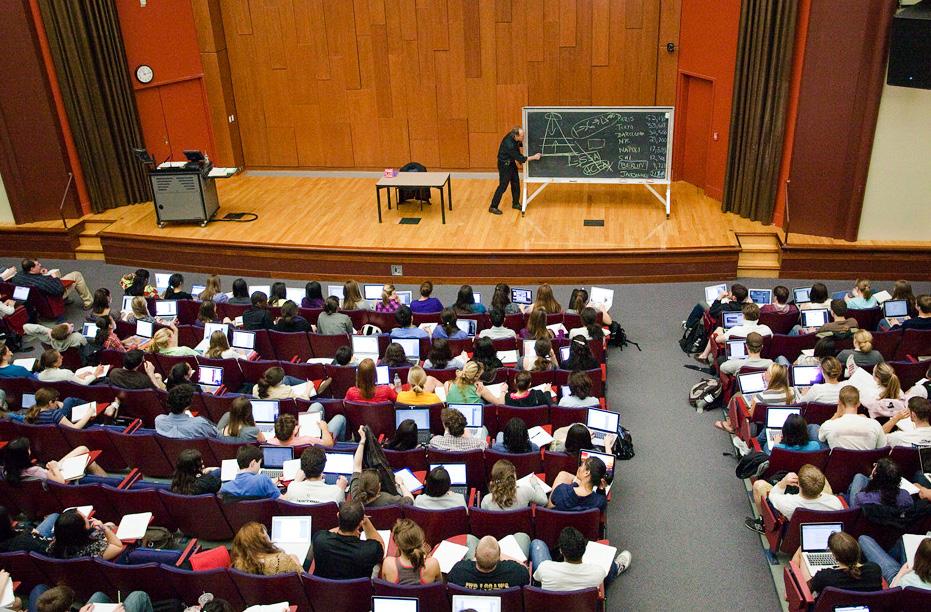
Back in 1982, “I had a huge advantage in preparing the course because I knew nothing about the subject,” Morone said. “Everything I read, I read through my students’ eyes.”
“City Politics” explores how cities create governance in different national political contexts, diving into both institutional and cultural perspectives on city politics, he explained.
According to Toby Arment ’23, a teaching assistant for “City Politics,” the course explores historical eras marked by urban revolution: the rise of cities, the development of political machines in cities, the rise of progressive reformers and how that history has shaped city politics today. Course materials explore the corruption and racial injustice embedded in urban politics.
Arment took Morone’s class as a first-year and ultimately decided to concentrate in urban studies. For him, the course shed light upon the inner workings of American democracy.
“You begin to understand why it is so hard to get anything done in America,” Arment said. “But also the idea that no matter who you are, no matter how much power you have, you can always have a voice in politics.”
Morone, who was born in Brazil and moved to New York at nine years old, said he “watched the classic civil rights
PAGE
FORUM
ported.
Brito said that UC s must “urge Brown to serve our neighbors in Providence,” referencing the city’s issues with poverty and its public school system. As UCs president, Brito hopes to be “a mouthpiece for the people.”
“Acknowledgement is not enough. We must act,” Brito said. “We cannot remain idle while others suffer.”
As vice president, Frank would also hope to improve the University’s relationship with the larger Providence community by meeting with local leaders to hear their needs. “Brown has a ton of resources and some of them go unused,” she said.
SCHOLAR FROM PAGE 1
The Florentine Codex, which describes spain’s conquest of the Mexica Empire from the perspective of Indigenous elders, demonstrates the presence of Indigenous resistance, according to De la Cruz. But because there is no updated translation of the study in mod-
movement unfold” in his first years in the U.s., which were marked by the March on Washington and Martin Luther King Jr.’s “I Have a Dream” speech.
“There was something transcendent and dreamlike about coming of age politically in a moment of hope,” Morone said. “That spirit of wonder about possibility and reform never left me.”
According to Dietrich Neumann, professor of history of art and architecture, Morone’s “colloquial but erudite style” is what attracts students to his classes.
“I always thought that Jim Morone had an extraordinary, truly outstanding talent as a speaker and lecturer,” he said. “He managed to interest hundreds of students in urban politics and help them understand how our cities work.”
For Howard Chudacoff, professor of history and American studies, Morone proved himself “a prolific scholar” the moment he arrived at the University. “He has been one of the most popular and influential teachers I have known,” Chudacoff wrote in an email to The Herald.
Morone often walks up and down the aisles of his large lecture class and cold calls on students to keep them engaged. “It’s that unique experience where you take a large lecture class but it feels like a seminar,” Arment said. “No one is going to be dozing off in the back of this lecture.”
Over the years, students who took “City Politics” have even gone on to hold political office themselves. Mo-
First-year CCB Class President Nick Lee ’26, who is running uncontested for next year’s 2026 CCB presidency, also emphasized the importance of giving back to the Providence community. Lee shared his idea to “establish a civic engagement event” and to make sure that CCB’s impact extends “beyond Brown.”
“I want to make sure that if we’re doing something outside the community … we’re actually helping people,” he added.
Another recurring theme among candidates was improving student life on campus.
Greenberg said he wanted to make “easy, feasible changes” to consistent problems among the student body by potentially extending dining hall hours
ern Nahuatl, the text is not accessible to contemporary Indigenous communities.
When interviewing the adolescents of El Tecomate, de la Cruz presented them with a partial summary of an excerpt from the codex. In his presentation, de la Cruz shared how these adolescents were surprised to learn about this history of Indigenous resistance, as well as the rich intellectual history of Nahua scholars.
rone recalled meeting a former student when he addressed the new members of Congress in 2008.
“He comes up to me and says, ‘Professor, remember me?’ ” Morone said. “He was telling the other members, ‘Watch out because this guy will cold call on you.’ ”
As Morone looks ahead to his retirement, he told The Herald that the thought of parting ways with “City Politics” is “a little scary.”
“My identity has been so wrapped up in being ‘the guy who teaches City
and making spring Weekend’s artist selection process more democratic.
“I hope to continue the work I already started,” sarmas said, referencing her previous work to make menstrual products free and accessible on campus and support for campus food insecurity.
Li also seeks to “address the needs of the student body,” and hopes to delay the s/NC deadline and expand student access to campus dining halls, art studios and gyms, according to Nam, who spoke on Li’s behalf as health issues prevented his attendance.
Frank noted that the most important improvement to be made for student life is dining — such as making sure that the online menus are accurate and extending dining hall hours.
“It is our responsibility as academics … to ensure that these documents … are accessible and visible to the public,” de la Cruz said. “Access will give visibility to the Nahua intellectuals of the past.”
“History is not something of the past; it affects us in every aspect of the present. How it is remembered and taught is impactful,” he added.
De la Cruz argued that with this translation, Nahua youth will have a
Politics,’ ” he said. “I’ve written 12 books. They’ve won awards. But still … I’m ‘the guy who teaches City Politics,’ and I have to give up that identity.”
Morone told The Herald that while he currently has no definite plans for his retirement, he intends on writing more books and living abroad at both Oxford University and Paris.
“I love to (teach this class),” Morone said. But “there are things I haven’t done that I want to do, and if I don’t do them now, I’ll never do them.”
Morone said that he hopes his stu-
UFB candidates discuss transparency, diversity
Current UFB Vice Chair Arjun Krishna Chopra ’25 and UFB representative Peter Tangikyan ’24 are running for UFB chair. Representatives Ian Kim ’25 and s amuel Walhout ’25 are competing for the position of vice chair, The Herald previously reported.
UFB candidates also discussed increasing funding for student groups and the importance of diversity and accessibility.
Chopra emphasized the need to increase the student activities fee in line with inflation to support programming. “We still have so much work to do,” he added.
stronger understanding of Indigenous history while also gaining increased exposure to the endangered language. He ultimately aims to make the translation accessible to the public online and free of charge.

De la Cruz is currently teaching three Nahuatl language classes at the University which “emphasize the relevance of Nahuatl as a living language, not a language of the past,” according
dents walk away from “City Politics” with both knowledge of, and a renewed sense of hope in, the American political process.
“Brown students across the political spectrum tend to want to make a difference,” Morone said. “They want to understand the reasons … for despair, but not to give in to it — to believe that it can be transcended by extraordinary people at extraordinary times.”
“That’s my pact with the students, to give them that,” Morone said. “That’s the Brown dream.”
Chris Vanderpool ’24, a candidate for UFB at-large representative, described the Board as “not a very welcoming or inclusive space” for student leaders applying for funding, adding that UFB must improve the “accessibility of students to funding.”
Kim also hopes to ensure that student groups applying for funding can better understand UFB’s decision-making process. He described UFB’s need to implement a newsletter, which UC s currently sends out.
Tangikyan said that UFB must “ensure that everyone’s voice is heard at Brown, especially cultural groups.”
to the Center for Language studies website. He came to the University in 2020 on a NAIs Faculty Grant after students expressed interest in Nahuatl language studies by creating a Group Independent study in Nahuatl.
As part of de la Cruz’s residency at Brown, he will be leading a Maize Ceremony Wednesday, March 15 and a Nahuatl pedagogy demonstration this Thursday, March 16.
UNIVERSITY NEWS
Brown professor’s digital publication wins prestigious PROsE award
BY BENICIO BEATTY STAFF WRITERVirtual reality devices have taken gaming and entertainment communities by storm in recent years, but the phenomenon isn’t entirely new. Massimo Riva, professor of Italian studies and affiliated professor of modern culture and media, explored “the long history of the timeless human aspiration to reproduce the world we live in” in his award-winning digital publication.
In “ s hadow Plays: Virtual Realities in an Analog World,” which was published last year, Riva looked at analog instruments in 18th- and 19th-century Italy that allowed people to observe simulations of the world as a precursor to virtual reality devices today.
On Feb. 8, “ s hadow Plays” was honored with a Professional and s cholarly Excellence award from the Association of American Publishers in the category of eProducts.
The project, which was a collaborative effort between Riva, Brown University Digital Publications and s tanford University Press, took over six years to complete. It highlights analog entertainment devices and discusses themes of “virtual travel, social surveillance and utopian imagination,” according to the project.
From optical devices such as Tiepolo’s cosmorama or Casanova’s polemoscope to art pieces like the painting “Mondo Nuovo” or Garibaldi’s Panorama, “ s hadow Plays” gives viewers a closer look at the art and science that influenced many of today’s innovations in augmented, extended and virtual reality.
According to Riva, the idea of s hadow Plays” began in 2015. In the decade prior, Riva had become interested in historical inventions that allowed viewers to observe simulations of the world around them.
“I’m fascinated by all the different ways by which artists in particular
have created optical illusions in the past and how, as a result, we’ve reached the point today where we are living in a virtual world of sorts,” Riva told The Herald.
This phenomenon, which Riva calls “virtual realism,” is “marked by the virtualization of the real and the realization of the virtual,” according to the publication.
When Digital Publications put out a call for project submissions in 2016, Riva brought his idea forward. Over the course of the next six years, Riva worked with Digital Publications, crafting a website that showcased the structure and function of these early inventions and forms of media. The team also collaborated with Digital Publications Designer
Crystal Brusch and local studios Focus Vision Media, based in Pawtucket, and s tudio Rainwater, based in East Providence, to design the interactive and three-dimensional elements of the website.
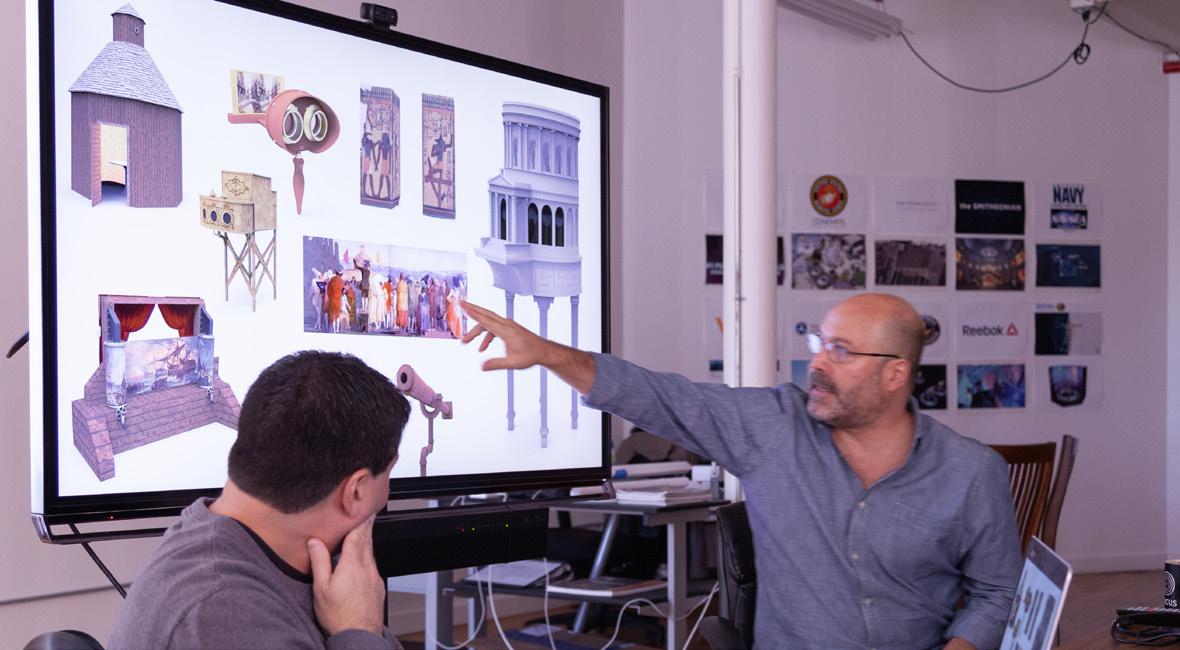
The project was published in June 2022 by s UP. According to Jasmine Mulliken, production and preservation manager for Digital Projects at s UP, the publisher’s role looked very different for “ s hadow Plays” than it does for a typical book.
“I work … to refine the technical and design elements, ensuring the project is coded in a way that would make it durable and resist the kinds of breakages that typically befall websites when they’re not built sustainably,” Mulliken wrote in an email to The Herald. As a final step, s UP worked alongside Brown’s Center for Digital s cholarship to create a digital archive for the project which, according to Mulliken, “can serve future researchers long after the publication itself is no longer accessible on the web.”
When he won the PRO s E award, Riva was on a book tour in Europe for “ s hadow Plays” and welcomed the news as an “unexpected surprise.” He explained that this award was particularly important because it recognized both the research contributions and the design and programming behind the digital project.
Riva added that the project will continue to grow. He is currently working alongside Focus Vision
Media to adapt several of the simulations for a “first person, more immersive experience.”
sabrina Huynh, marketing, publicity and sales assistant at s UP, managed the award process. According to Huynh, the prestigious award is judged by a panel of professionals and the application is extensive, “requiring nomination rationales, endorsements and links to published reviews.”
Allison Levy, director of the University’s Digital Publications and a collaborator on the project, said the PRO s E Award signifies “industry-level recognition” of the work being done at Brown.
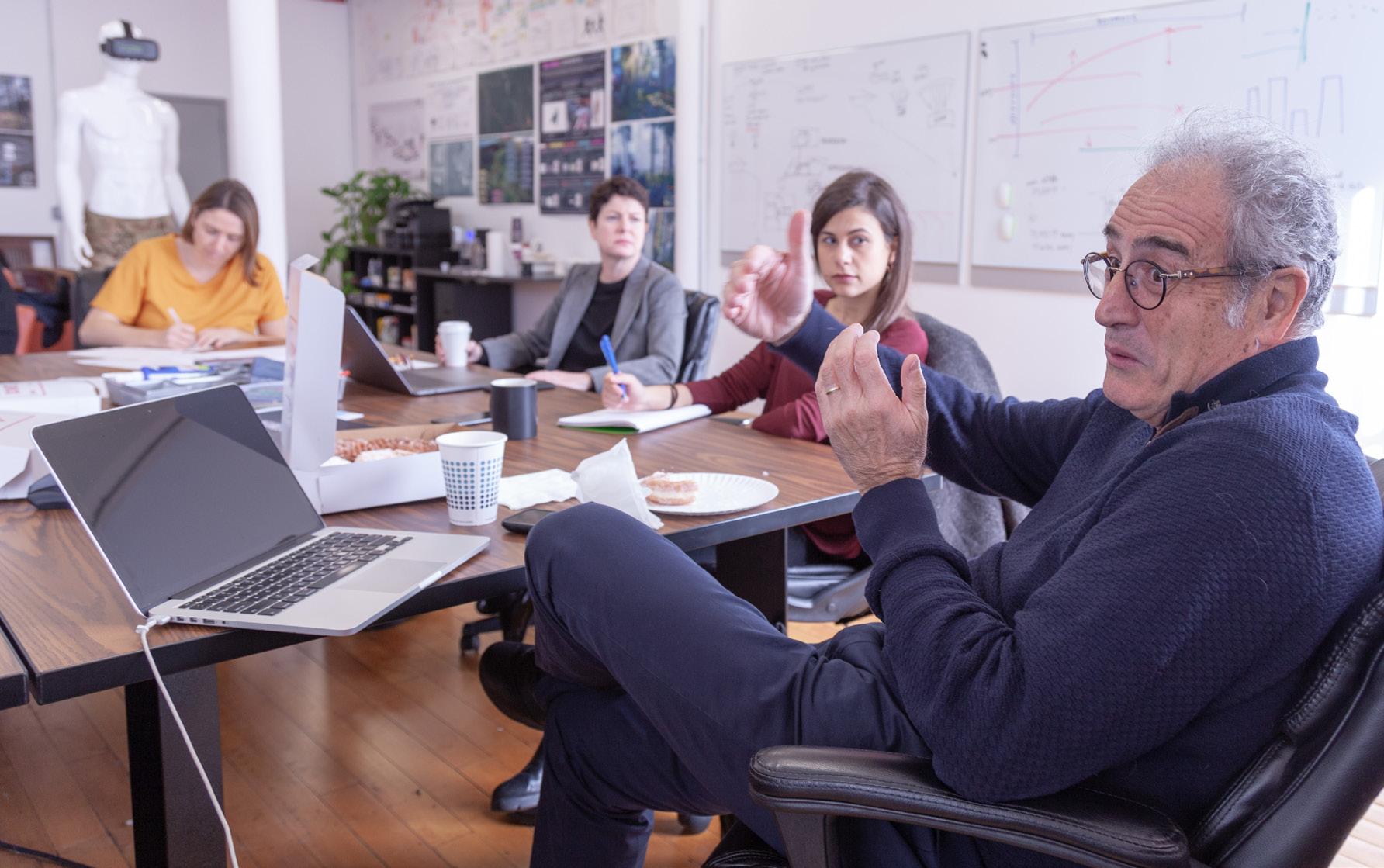
Digital Publications has continued to garner praise and support for its work with faculty projects and outreach initiatives. “ s hadow Plays” is Digital Publication’s second scholarly work to be published and its second to be awarded, with “Furnace and Fugue” being awarded the 2022 Roy Rosenzweig Prize for Creativity in Digital History by the American Historical Association.
Levy explained that she is optimistic that future projects will be met with similar success. “This is here to stay,” Levy said. “Brown University Digital Publications … is a program of distinction, and we are going to see more and more of this work.”
Digital Publications currently has 13 projects in development, many of
CALENDAR
which involve Brown students, faculty and designers, according to Levy. “This portfolio is ever-growing,” she said. “The work is happening in the library, but its impact is global.”
TODAY’S EVENTS
My Anaconda Do: Penis Pleasure & Politics
5:30 p.m.
Kasper Multipurpose Room
TOMORROW’S EVENTS
Mineral & Fossil sale
8:00 a.m. - 5:00 p.m.
Main Green
Writers on Writing: Wendy Xu 5:30 p.m.
McCormack Family Theater
COURTESY OF BEN TYLER
outside the Brown community to pursue digital publishing opportunities. “My best advice to my colleagues is to work with your imagination and find new forms that suit your research,” Riva said. “Digital formats can liberate our creativity.”
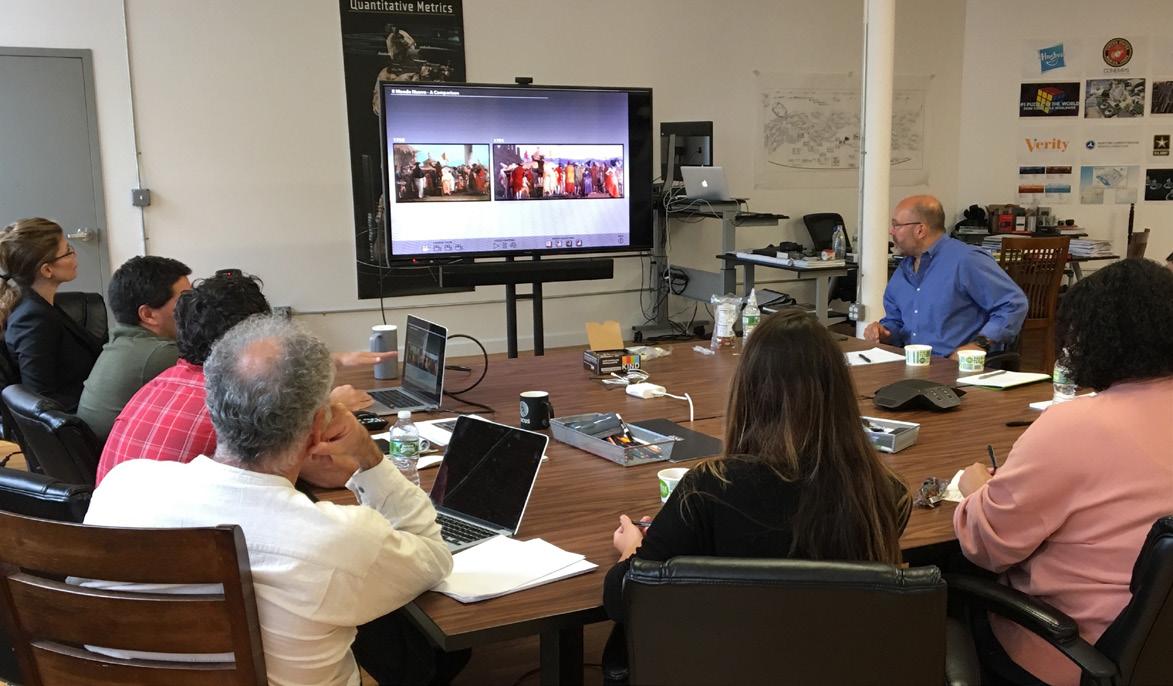
“The Cocoon & Butterfly” (2020) screening 5:00 p.m. - 6:30 p.m.
Center for Language Studies
The Future of Affirmative Action 7:00 p.m.
Petteruti Lounge
Gender, Race, Allyship in the 1877 Gibbs-DeWolf Window 12:00 p.m. - 1:30 p.m.
Pembroke Hall
Brown Venture Prize 7:00 p.m. - 8:30 p.m.
Sayles Hall
‘Inspire the next generation of neuroscientists’: Brown to host Brain Fair
Event organizers discuss accessibility, equity in neuroscience, benefits of research
BY OWEN DAHLKAMP SENIOR STAFF WRITERThis s aturday, the Carney Institute for Brain s cience is set to host the Brown Brain Fair in Barus and Holley as part of the week-long Brain Week Rhode Island event. Brain Week R.I. is part of a larger Brain Awareness Week campaign that seeks to “increase public awareness of the progress and benefits of brain research,” according to their website.
The goal of the event is to “raise awareness of the different types of research regarding the brain … at Brown and in Rhode Island,” said Hannah Doyle G s , one of the co-coordinators of the event, in an interview with The Herald.

The fair has not been held since 2019 due to the COVID-19 pandemic. As a result, planning the event “has been a little tricky, because a lot of the institutional knowledge of planning has been lost,” Doyle said.
But the original founder of the Brain Fair is still part of the team: Victoria Heimer-McGinn, co-founder and co-chair of Brain Week R.I., originally founded Brain Week in 2016, with the Fair being one of its original events.
The idea “came from a family history of mental illness where there’s three generations in my family that, in some respect or another, have been interested … in the brain,” she said.
Near the beginning of her career, Heimer-McGinn was “part of (an) ad -
UNIVERSITY NEWS
vocacy group trying to raise funds for mental health funding at the level of Congress for basic research.”
“We got a lot of questions from people that made (it) glaringly obvious that people didn’t really understand the science we were doing,” she added.
Partnering with community organizations and undergraduates at the Brown Brain Bee, Heimer-McGinn aimed to “educate, showcase and inspire” people about the human brain.
This year, the Brain Bee has continued its partnership with Doyle and her co-coordinator, Gabriela Molica
G s , in planning the event.
“The Brown Brain Bee has historically been involved in the Brain Fair, so we thought we’d keep that up,” said Nova Chen ’23, co-coordinator of the Brain Bee.
With the last Brain Fair hosted four years ago, “we had no idea what to do in the beginning because we had never been a part of a Brain Fair, let alone had to plan it,” said Ayse Erdemir ’23, co-coordinator of the Brain Bee.
According to Doyle, this year’s Brain Fair will include interactive tables hosted by labs, hands-on learn -
ing opportunities for children and “lightning talks” from researchers at the forefront of their fields in AI, brain cancer technologies, multitasking, philosophy and more.
These activities and lectures will be aimed at a “general audience,” with the information being “distilled down” so those with little to no knowledge of neuroscience will be able to “benefit from the information,” she added.
In an email to The Herald, Molica wrote that the event’s accessibility to the broader community is vital, as it is the “duty of a scientist to keep in
touch with your community — show them the great new discoveries being made, convey why research is important and inspire them to think critically.”
Brain Week R.I. has recruited Brown undergraduate and graduate students to partake in “brainy visits,” which Heimer-McGinn described as “free neuroscience lessons in K-12 schools (that aim to) inspire the next generation of neuroscientists in our state.”
“ s ome of those students who we’ve taught in the classroom are going to … host a table to show people what they learned in class,” she added. Heimer-McGinn noted that outreach initiatives such as these visits are crucial to including “more diverse voices in science.”
At the last fair in 2019, 75% of attendees were white and 33% held a degree in a neuroscience-related field, according to Heimer-McGinn. As for this year’s Brain Week, she hopes “the education that we’re bringing is really reaching every little corner of our state, not just the East s ide crowd.”
In pursuit of this goal, the organization held the first annual Pawtucket Brain Fair on s unday to “increase accessibility” for those throughout the state.
They have also added further accessibility resources, such as “translators for English, s panish, Portuguese and A s L,” to Brain Week R.I., Heimer-McGinn added.
Moving forward, Heimer-McGinn, Doyle and Molica all hope to increase the diversity of attendees and of the neuroscience field more broadly.
The Brown Brain Fair will take place in the Hazeltine Lobby in Barus and Holley at 10 a.m. on March 18.
At ‘the center of a national debate’: U. scholars talk critical race heory
non-scholarly contexts. “Now, it’s used to refer to anything that has to do with discussions of racism, sexism, homophobia (or) colonialism — you name it.”
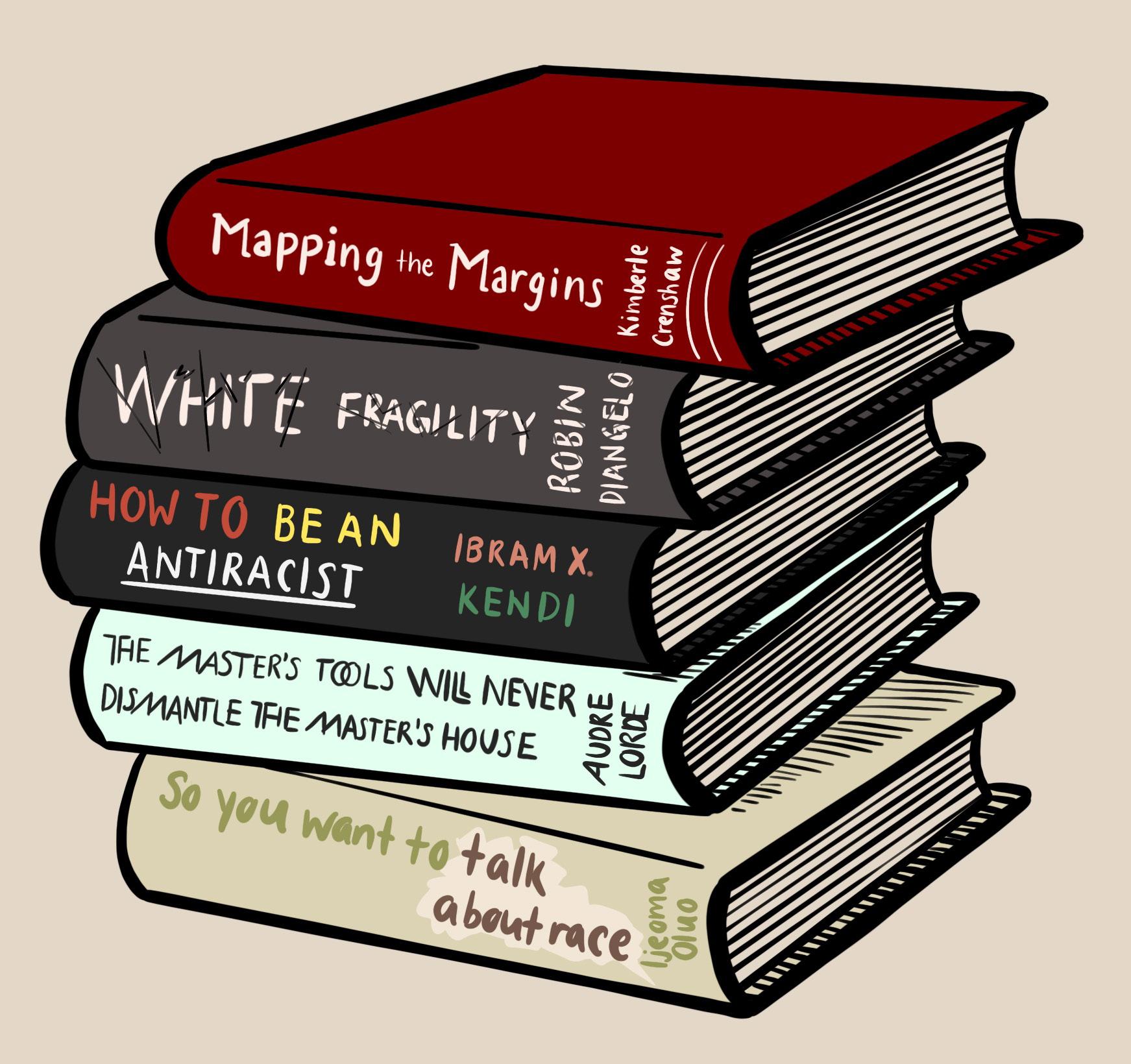 BY RYAN DOHERTY STAFF WRITER
BY RYAN DOHERTY STAFF WRITER
Critical race theory has been “thrust into the center of a national debate,” according to Rosalind Chou, associate professor of sociology, who teaches s OC 1827O: “Critical Race Theory.”
Historically, critical race theory and its scholars have been left out of American political discourse, according to Chou. “We were in a very esoteric wing of sociology that no one ever heard of.”
But the academic and legal framework, which originated in the 1970s and 80s to understand the role of institutions in upholding racial inequalities, has recently taken a national spotlight, being cited in several state laws restricting K-12 curricula.
The Herald spoke to three scholars at the University who use critical race theory in their work about its meaning, purpose and public perception. s cholars in critical race theory at Brown said that in light of the national debate, they have faced public
backlash for studying a field that is often misunderstood.
‘Now, it’s used to refer to anything’ Critical race theory is “this idea that racial bias and discrimination is etched into the fabric of American laws and institutions,” wrote Jonathan Collins, assistant professor of
political science, public policy and education in an email to The Herald.
“It’s a way of helping us understand how we see persisting racial disparities in the U. s . despite attempts at improving social policy.”
But according to Juliet Hooker, professor of political science, the term is used too broadly in
Chou believes that right-wing political figures have been purposely painting critical race theory in a negative light without scholarly merit.
“Anytime the status quo is challenged — in this case, racially — there’s going to be an immediate backlash,” Chou said.
Chou said she hopes that s OC 1872O and similar courses bring light to “how widespread and how deeply (inequality) runs through our history.”
“My work here at Brown is to make sure that misconceptions that have been put in the media with spin are dismantled,” she said. The classroom as a place to ‘learn how to be citizens and to have debates’ s ince the field entered the forefront of national debate, scholars of CRT have received threats, Chou said.
“I have colleagues who have gotten called out or identified by conservative activists and who get hate mail (and) death threats,” Hooker added.
But in the face of backlash against
critical race theory, Chou and Hooker both said that the University is supportive of their work.
Before working at Brown, Chou and Hooker worked at Georgia s outhern University and the University of Texas at Austin, respectively. Chou said that Brown is more welcoming to scholarship related to inequality, including critical race theory, than institutions in her former state.
Hooker added that she feels lucky to be at Brown because it is “insulated from some of the direct attacks on what (professors) can teach.”
Hooker said she hopes that the national backlash does not stifle conversations in the classroom. “The classroom works best when it’s a place where people can raise ideas, raise questions (and) be exposed to things that they don’t know,” she said.
Calls to restrict critical race theory from being taught are “antithetical” to a classroom’s function, she added.
“Classrooms function (for) students to not just learn about the subject, but learn how to be citizens and to have debates and disagreements with each other,” she said. “ s o if we can’t do that in the classroom, how are we going to learn how to do that when we’re not in school?”
Professors discuss critical race theory in context of scholarship, national politicsRHEA RASQUINHA / HERALD
Sincethe field has sparked national debate, CRT scholars have received threats, said Rosalind Chou, associate professor of sociology.
Gaber ’23: Stop pitting famous women against each other
Celebrity feuds go almost as far back as the modern celebrity persona itself. s ome of the most popular feud narratives in tabloid media have been love triangles that see two women competing over a man. In Old Hollywood, it was Elizabeth Taylor and Debbie Reynolds. In the early 2000s, Jennifer Aniston and Angelina Jolie covered the front pages of tabloids. Most recently, a feud between s elena Gomez and Hailey Bieber has taken the internet by storm. s ome of the women in question have openly addressed these feuds, while others have vehemently denied or refused to acknowledge the rumors. Whether or not there is any truth to these feuds, such narratives provide fodder for “catfights” and artificially-induced female competition, ultimately undermining feminism by reducing solidarity among women. We must stop taking sides in feuds between celebrity women, whether they are real, exaggerated or categorically false.
“Love triangle” narratives are among the most excruciatingly sexist in celebrity news coverage. The contrived pipeline of femme fatales “stealing” the husbands of America’s sweethearts is long and exhaustive. In each of the aforementioned cases, there is an established marriage or relationship between two celebrities that ends. The narrative goes that, presumably, the man has left the woman for another who is ostensibly more beau
tiful or in some way “better.”
Debbie Reynolds said that even she believed that her husband left her for Elizabeth Taylor because she wasn’t as “sexual”
and “passionate” as Taylor. During Jennifer Aniston’s divorce, the press wrote that she had chosen a career over motherhood, which Brad Pitt couldn’t tolerate. And when Hailey and Justin Bieber married soon after the latter’s reported breakup with s elena Gomez, the narrative was that Hailey Bieber had “stolen” Gomez’s man. There’s one huge question that each case seems to
fourth-wave feminist society.
Though a frequent instigator, tabloid media alone can’t be blamed for this problem. These narratives have taken up page space across media for decades because of reader fascination. In the 2000s, “Team Aniston” and “Team Jolie” T-shirts demonstrated public buy-in for the presumed battle between the two. Even today, videos with
Why do we insist on proving that one woman is better than the other? We cannot justify this public endorsement of contrived strife between women. Yet this genre of gossip has titillated us enough so that celebrity feuds between women are staples of popular culture. Though it may seem far-fetched to completely undo our interest in celebrity culture, which would be a much more comprehensive answer to this problem, at the very least those who call themselves feminists must reconsider their relationship to these gossip campaigns.
avoid: What about the husbands? The fact that no one ever blamed Pitt for his divorce from Aniston seems to suggest that the public sees husbands as devoid of responsibility in these narratives. Instead, we blame women for either ruining their relationships or stealing each others’ partners. In all cases, public shaming abounds only for women. But what is truly shameful is that such narratives continue in our media today, even in a
#teamselena or #teamhailey hashtags cover TikTok’s “for you” pages. These videos take a clear stance on the feud, as in the case of the T-shirts, while also giving the public a chance to weigh in, providing their specific opinions on the relationships. Creating videos that further pit women against each other seems to provide spectators with their own twisted entertainment.
But what does this say about our culture?
Whether the celebrities are models, actresses, singers or none of the above, tabloid media coverage can’t get enough of women who may not get along with each other, especially when a man lies at the center of the conflict. As readers and consumers of media, it is our collective responsibility to actively resist these narratives and think critically about what they aim to accomplish. In a society where social media has become critical to celebrity discourse, it is even more vital that we reconsider what content related to these narratives we post, repost and even like. After all, we are only as good as the culture we perpetuate.
Yasmeen Gaber ’23 can be reached at yasmeen_gaber@brown.edu. Please send responses to this opinion to letters@browndailyherald.com and other op-eds to opinions@browndailyherald.com
THE BROWN DAILY HERALD
133rd Editorial Board
Editor-in-Chief
Will Kubzansky
Managing Editors Katy Pickens
Alex Nadirashvili
Senior Editors Augustus Bayard
Caleb Lazar
Peter Swope
Kaitlyn Torres
Post- Magazine
Editor-in-Chief
Kimberly Liu
News
Metro Editors
Emma Gardner
Rhea Rasquinha
Jacob Smollen
Julia Vaz
Science & Research Editor

Haley Sandlow
Senior Science & Research
Editor
Gabriella Vulakh
Arts & Culture Editors
Aalia Jagwani
Finn Kirkpatrick
Rya Vallabhaneni
Sports Editor Linus Lawrence
University News Editors
Sofia Barnett
Charlie Clynes
Emily Faulhaber
Grace Holleb
Sam Levine
Neil Mehta
Haley Sandlow
Kathy Wang
Digital News Director of Technology
Swetabh Changkakoti
Opinions
Editorial Page Editor Kate Waisel
Head Opinions Editor
Alissa Simon
Opinions Editors

Anika Bahl
Bliss Han
Melissa Liu
Jackson McGough
Multimedia
Illustration Chief
Ashley Choi
Photo Chiefs
Elsa Choi-Hausman
Dana Richie
Photo Editors
Mathieu Greco
Claire Diepenbrock
Rocky Mattos-Canedo
Lilly Nguyen
Kaiolena Tacazon
Social Media Chief Sahil Balani
Social Media Editors
Julian Beaudry
SINCE 1891 @the_herald facebook.com/browndailyherald @browndailyherald @browndailyherald

Nadia Bitar
Emily Faulhaber
Alyssa Sherry
Kaiolena Tacazon
Production
Copy Desk Chief Brendan McMahon
Design Chief
Neil Mehta
Design Editors
Sirine Benali
Maddy Cherr
Ashley Guo
Gray Martens
Business
General Managers
Joe Belfield
Andrew Willwerth
Sales Director Alexander Zhou
Finance Director Eli Pullaro
the editor to letters@browndailyherald.com.
Submissions undergo multiple rounds of editing. These rounds of editing generally take place over the course of one evening, and you may have to respond to edits late in the evening. If you know you will be unable to do so, please mention that in your email, and we will do our best to work with you.
Submissions can build on reporting from The Herald, reporting elsewhere, official statements from the University or other groups and other reputable sources, but they cannot break news or contain information that The Herald cannot verify. Because we cannot publish unsubstantiated information, failure to provide appropriate sources may mean we have to modify or remove unverified claims. The Herald will not publish anonymous submissions or submissions authored by organizations. Leaders of student organizations can be identified as such but cannot write under the byline of their organization. The Herald cannot publish all submissions it receives and reserves the right to edit all submissions. All submissions to The Herald cannot have been previously published elsewhere (in print or online — including personal blogs and social media) and must be exclusive to The Herald. Once your submission is published in The Herald, The Brown Daily Herald, Inc. owns the copyright to the materials.
Commentary: The editorial is the majority opinion of the editorial page board of The Brown Daily Herald. The editorial viewpoint does not necessarily reflect the views of The Brown Daily Herald, Inc. Columns, letters and comics reflect the opinions of their authors only.
Corrections: The Brown Daily Herald is committed to providing the Brown University community with the most accurate information possible. Corrections may be submitted up to seven calendar days after publication. Periodicals postage paid at Providence, R.I. Postmaster: Please send corrections to P.O. Box 2538, Providence, RI 02906.
Advertising: The Brown Daily Herald, Inc. reserves the right to accept or decline any advertisement at its discretion.
“We must stop taking sides in feuds between celebrity women, whether they are real, exaggerated or categorically false.”
AIDS scholars discuss history, cultural impact of condition in new book
‘The Times of AIDs Cultural Production’ event aims to reignite discourse about AIDs
BY DENNIS CAREY SENIOR STAFF WRITERAlexandra Juhasz, professor of film at Brooklyn College, and Theodore Kerr, lecturer of interdisciplinary arts at The New s chool, discussed their new book “We Are Having This Conversation Now: The Times of AID s Cultural Production,” at an event hosted by the Cogut Institute for the Humanities Tuesday.
The book, published November 2022, lays out a timeline of the American AID s epidemic and its relationship to national culture. The talk, titled “The Times of AID s Cultural Production,” featured a structured question-and-answer session with s ofia s acerdote ’22.5 and Justin s mith ’02, director of the Campaign to End AIDs at Positive Impact Health Centers.
According to Kerr, the book’s 13 chapters tell different stories about AID s and its impact on either individuals or American culture as a whole. Each chapter discussed cultural factors that either silenced or
highlighted people with AID s The book’s narration resembles a conversation between the two authors: “We wanted to create something of record that put our thinking into a book,” Kerr said. Juhasz hopes
that this writing style will inspire a broader conversation between the book and its readers.
Attendee Charlotte Marcil ’23 noticed this interest in conversation at Tuesday’s event. “It seemed like (the authors) were interested in hearing from everyone that came to the event,” Marcil said. “All the audience members were treated as participants (in) the conversation.”
The panelists discussed AID s “Crisis Culture,” a period of nationwide panic from 1987 to 1996 characterized by “mass cultural production … about HIV/AID s leading to social, political and medical breakthroughs,” according to the book.
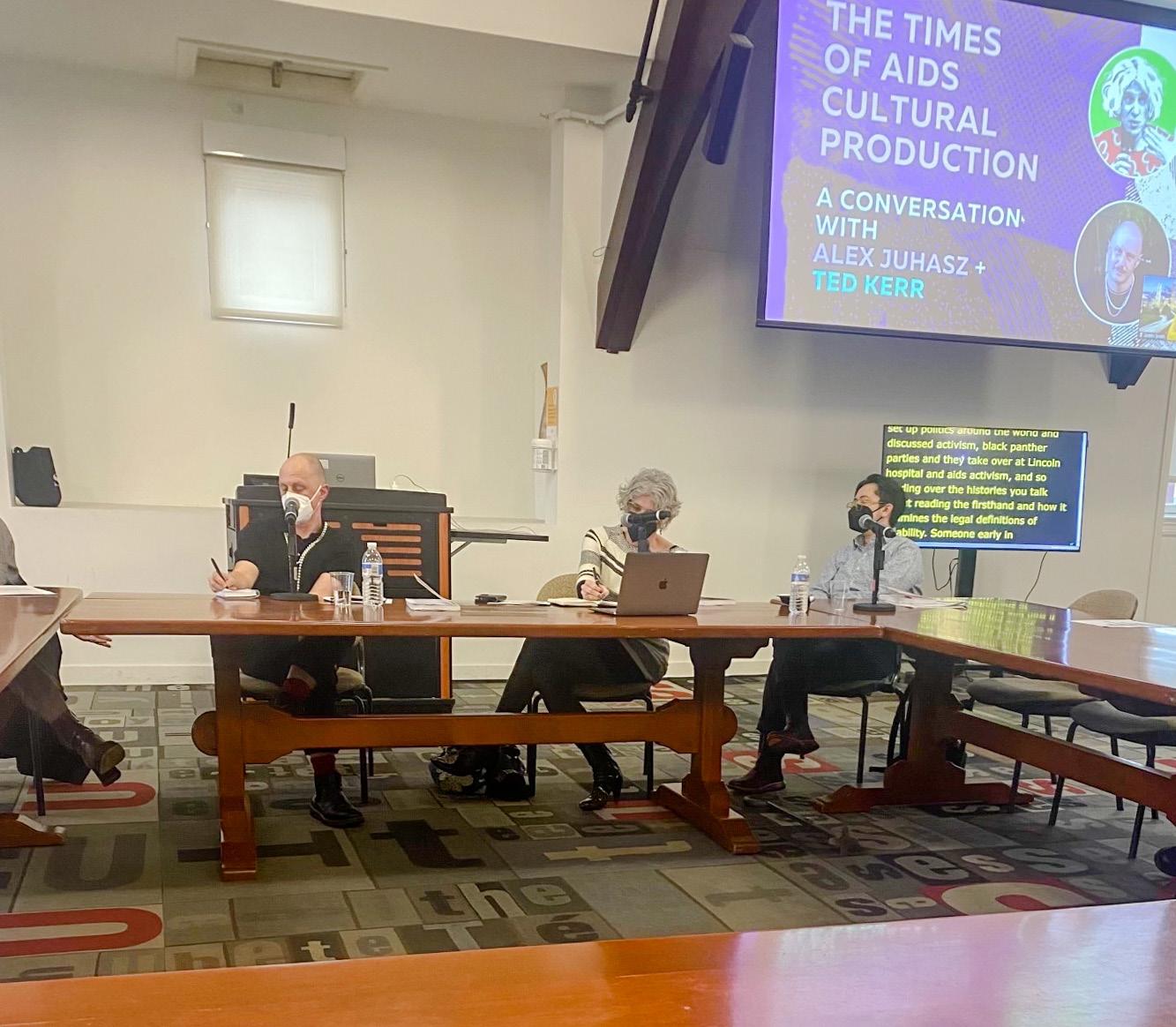
Juhasz, who was involved in AID s discourse during the Crisis Culture, said that conversations about the condition were unavoidable. “If you were a young political person living in a city, you were thinking about (AID s ) because it was so impactful.”
The authors then discussed the “First s ilence” and “ s econd s ilence.” The former refers to a period between 1981 and 1987 when the U. s . government largely ignored AID s and
its impact on communities of color while simultaneously perpetuating homophobic ideologies. The latter refers to a period between 1996 and 2008 following the Crisis Culture when AID s fell into mainstream cultural irrelevance.
According to Kerr, the term “silence” in the names of both periods refers to ignorance from the public, not a literal lack of noise. This silence inspired Kerr’s research into the disease: “I wanted to create noise,” he said.
Reflecting on their work, Juhasz discussed the importance of avoiding another period of silence surrounding AID s AID s “isn’t something that just happened in the 1980s (to) gay men,” Juhasz said. “And it isn’t just something that we can anticipate soon that it will be over. The presence of HIV, the now-ness of HIV, is a fundamental message.”
“One of the many lessons of HIV is that people working together can change the world for the better,” Kerr said. “Hopefully, our book does that for the individual (and) community.”
Baseball picks up first win of season in dramatic series at Penn State
SPORTS Bears drop first two games on walk-offs before taking series finale
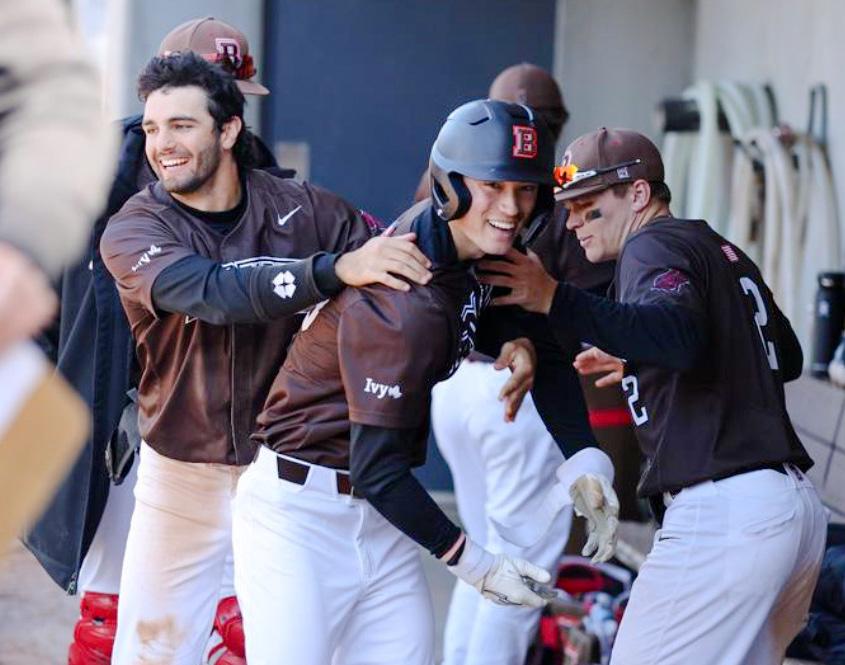 BY LINUS LAWRENCE SPORTS EDITOR
BY LINUS LAWRENCE SPORTS EDITOR
The baseball team (1-9) played a trio of close games over the weekend at Pennsylvania state University (9-5), picking up their first win of the season in the third game of the series after being handed two walk-off losses in the previous two games. The fourth game of the series, scheduled for sunday, was canceled due to inclement weather.
Penn State 7, Brown 6
In the series opener on Friday, the Bears jumped out to a 3-0 lead in the fourth inning with a solo homer from Ryan Marra ’23 and RBIs from Ray sass ’23 and Derian Morphew ’23. Their three-run lead was the largest lead they had held at any point in the season so far.
But the Nittany Lions stormed back in the fifth inning, scoring four runs to snatch the lead. The rally knocked starting pitcher Tobey McDonough ’23, who had previously allowed just two hits and tallied four strikeouts over four scoreless innings, out of the game.
Reliever Carter Rasmussen ’26, who won Ivy League Rookie of the Week honors for his dominant performance against the University of New Orleans a week prior, held Penn state’s bats at bay, picking off an inherited runner and then retiring the first 10 batters he faced following McDonough’s exit.
The Bears retook the lead on backto-back solo homers from Marra and Jacob Burley ’23 in the seventh and then added an insurance run on a Burley sacrifice fly in the ninth to make the score 6-4.
But in the final frame, the Nittany Lions regained life, opening their half of the inning with a homer and backto-back doubles to even the score. With
two outs and runners on the corners, Rasmussen induced a ground ball toward second base which could have sent the game to extras. But after diving to his left to reach the ball, a shifted sass bounced the throw and Marra failed to pick it, allowing the run to score and Penn state to prevail 7-6.
Penn State 6, Brown 4 F/12
The opening game of saturday’s doubleheader was another nail-biter, with possession of the lead seesawing between teams in the early innings. With the Nittany Lions up 3-2 after four innings, Marra clubbed a two-run blast — his third homer in under 24 hours — to give the Bears the lead.
“The key for me this weekend was just trusting my process and relaxing while enjoying the game,” Marra wrote in a message to The Herald via Brown Athletics.
In the bottom of the sixth, Penn state re-tied the score on their fourth solo home run of the game.
But neither team was able to keep up the momentum on offense and the game remained tied until extra innings. Reliever Jack seppings ’25 — who spent the week at the Great Britain national baseball team’s minicamp for the World Baseball Classic — tossed 3 2/3 scoreless innings with five strikeouts and just one hit allowed in return.
The Bears seemed poised to pounce in the top of the 12th, loading the bases with one out, but failed to score after back-to-back strikeouts. Then, in the bottom of the inning, Penn state shortstop Jay Harry hit his second home run — and the team’s fifth — of the game to give the Nittany Lions a 6-4 victory.
“Losing stings, regardless of how it takes place. Going into every game with a fresh mindset allows us to reboot and control what we can, not what has already happened,” wrote Head Coach Grant Achilles in a message to The Herald via Brown Athletics. “Those first two games were the best baseball we had played all year, and the games truly came down to a couple of plays throughout the game.”
“While losing on the last play of the game two straight games can be demoralizing, we realized we outplayed them and just needed to stick to our approaches and process and the results would soon follow,” Marra wrote.
Brown 4, Penn State 3
In the series finale, the Bears scored four runs in the top of the third inning, which was all the team would need. The Bears concluded the weekend with a total of 14 runs and 29 hits across the three-game series.
“As the weekend went on, I thought our hitters did a good job of being aggressive in the strike zone early and competing at the edges with two strikes,” Achilles wrote. “We aren’t a lineup built for power, but rather a well-rounded attack with speed, skill and quality at-bats.”
“The four-run third inning on sun-
day showcased what we’re capable of, and we had baserunners all weekend — we just need to cash in on those opportunities to put more distance between us and our opponents,” he added.
Marra once again led the Bears’ offensive effort by hitting a two-run double to open scoring. Marra finished the three-game set with six RBIs, tallying two in each game.
Bobby Olsen ’23 posted an impressive outing on the mound, throwing five innings of one-run, three-hit ball to pick up the first win of his Bears career, in addition to the Bears’ first of the season.
“It felt great, not only for me but for the team as a whole,” Olsen wrote in a message to The Herald. “It is just the result of the team’s determination going into this weekend. We played hard and came out saturday ready to compete.”
Though the Nittany Lions cut Bruno’s lead to 4-3, Brown was able to hold on, with rookie Peter Dubie ’26 recording two perfect innings to secure the first save of his Bears career.
With their first win finally under their belt, the team will next face Bryant University in a doubleheader on saturday. The game will be their home opener at Attanasio Family Field at Murray stadium, and the series will be the Bears’ last before opening Ivy League play March 25 against Columbia.
“We feel very confident in the way we have been improving every game, and know this is just the start of our winning ways,” Marra wrote. “We are looking forward to being back on our home field and playing in front of a home crowd once again.”
“We are extremely excited going into this weekend,” Olsen wrote. “We are ready to compete.”
Women’s fencing competes in NCAA Regional Championships
Casey Chan ’23, Sofia Yee-Wadsworth ’24 advance to NCAA Championships
BY LYDELL DYER STAFF WRITER
On s unday, the women’s fencing team competed in the NCAA Northeast Regional Championships in Cambridge, Massachusetts. Across the three disciplines — foil, saber and epee — 104 athletes fought for one of 36 positions in the final of four elimination rounds. Two Bears, Casey Chan ’23, a former Herald staff writer, and s ofia Yee-Wadsworth ’24, were able to reach the final round of play. Both Chan and Yee-Wadsworth were selected to compete in the 2023 National Collegiate Men’s and Women’s Fencing Championships after their performances at NCAA Regionals.
“Regionals is without a doubt one of the hardest competitions of our season,” Yee-Wadsworth wrote in a message to The Herald via Brown Athletics. “It is a 10-hour marathon where you are … fighting your own mental and physical fatigue. It is completely and utterly draining, but even though everyone was contending with their own competition-day emotions, people on the team were constantly looking out for each other.”
Chan, one of the team’s two cap -

tains, narrowly missed the podium, finishing fourth in the saber — the fastest of the three fencing disciplines. During this event, athletes earn points for striking their opponents, either with the tip or with the side of their blade, in a target area anywhere above the waist. Rebecca Whang ’25 and Alexandra Tzou ’26 competed in the saber as well, finishing in 13th place and 16th place, respectively.
s eeded ninth overall in the saber, Chan was exempt from competing in the first round of competition. In the second and third pools, which each consisted of six bouts, Chan advanced
with three and four victories, respectively. Chan’s early efforts propelled her into the final round of play.
With the NCAA Championships looming and playing for the possibility of qualifying, the stakes were high in the final round. Over the course of her 11 bouts, Chan was able to strike her opponents 41 times while only being struck 37 times herself, earning her a total of five victories — with her total touches serving as a tiebreaker.
“The NCAA Regionals are always a challenging tournament, but I enjoyed competing with great fencers throughout the day,” Chan wrote in
a message to The Herald via Brown Athletics. “I was really thankful for my teammates’ support throughout the competition. I want to commend their awesome performances as well.”
“It would be a dream come true to compete at the NCAA Championships again,” Chan, who finished in 12th place during last year’s championships, wrote. “Throughout my fencing career, I’ve always dreamed of competing at (the) NCAA Championships and going up against some of the best fencers in the sport … It was a surreal experience last year and I enjoyed being able to compete on the collegiate national stage.”
This year, Chan said she hopes “to do even better than I did last year.”
The Bears also battled their way into the final rounds of another event: Yee-Wadsworth finished in seventh place in the epee. During the epee, which uses the largest of the three swords, athletes can only attack their opponents wielding the tip of their blades. With the target area expanded to encompass the entire body, athletes tend to play more defensively, causing the epee to be considered to have the slowest pace of the three disciplines.
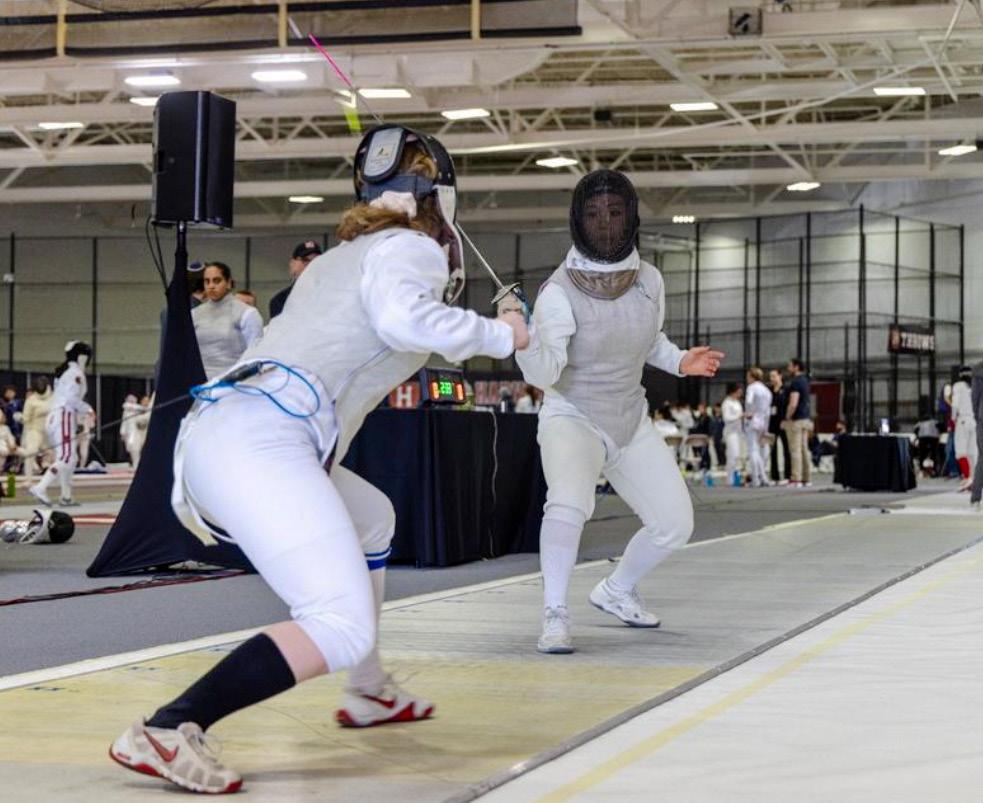
“If you had asked me on s aturday before the competition if I would get seventh, I would have laughed and said you were being too kind,” Yee-Wadsworth wrote in a message to The Herald. “Regionals was without a doubt some of the best fencing
of my career and I am very happy with my results, but I am also very grateful for everyone who supported me throughout this grueling competition, especially my mom and my teammates.”
Due to her seeding as one of the top 13 contestants, Yee-Wadsworth was able to sit out the first round of play. Over the next two rounds, she won seven out of a possible 12 bouts. In the final pool, Yee-Wadsworth was victorious in five of her 11 bouts, earning the seventh overall position. Yee-Wadsworth’s teammates, Arianna Baffa ’24 and Dasha s muk ’26, finished in 25th place and 32nd place, respectively.
“Although I fenced very well yesterday, there are still technical and athletic areas of my fencing where I need to improve in order to excel at future competitions,” Yee-Wadsworth added. “Next year will be my final season on the Brown varsity women’s fencing team and I hope to build upon the successes from this season to continue to proudly represent Brown and the fencing team in 2023-24.”
In the foil, Anika Breker ’24 finished in 16th place, Anisha Kasi ’23 took home 21st place, Grace Li ’26 finished 29th and s a mantha Chon ’24 finished 42nd.
Chan and Yee-Wadsworth will next compete in the NCAA Championships, which will take place March 23-26 and will be hosted by Duke University.
